2020 | Panorama
The Intersectional View
Michael Stütz has worked in various positions in Panorama since 2006; between 2017 and 2019 he was curator and programme manager. This year, he became the head of the section. In this interview, he discusses transnational cinema, self-empowerment via mobile phone cameras and the intersectionality of a new queer cinema.
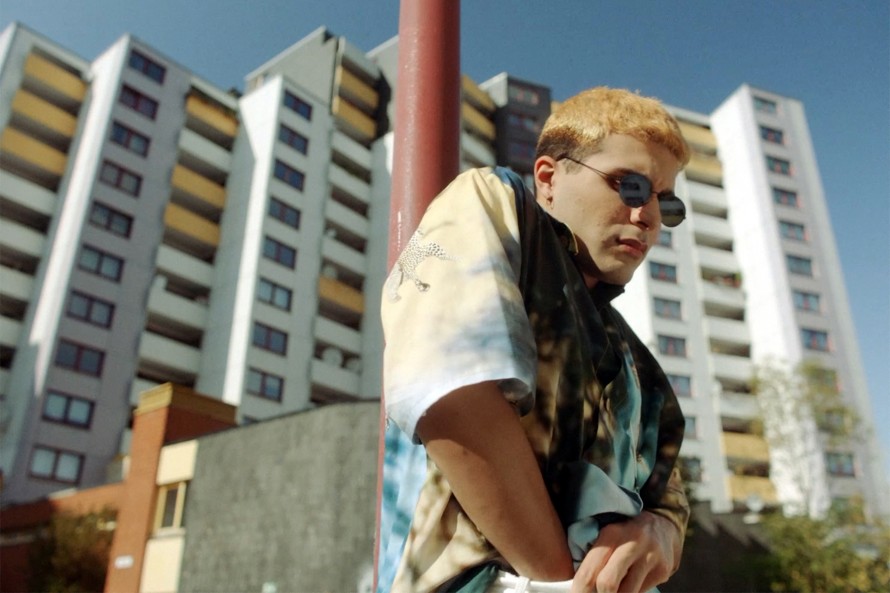
Benjamin Radjaipour in Futur Drei (No Hard Feelings) by Faraz Shariat
You are the sole section head for the first time this year. What effect has that had on the selection process?
Michael Stütz: It was of course a challenge, even though I’d gained a lot of experience during the previous years. However, the new festival leadership brought a number of new people with them who have collaborated in the selection process. I found that extremely exciting and liberating because the whole mix of people was fresh.
The programme has become smaller in 2020. We have 36 films – nine fewer than last year. Due to the new Encounters section, all the sections have had a close look at themselves and I think it was very important for the artistic director, Carlo Chatrian, that we preserve the identity of Panorama while at the same time sharpening the section’s profile. There are always overlaps, as indeed there should be. We are no longer in the 1970s or 1980s, the film landscape has completely changed and extreme contrasts are difficult to establish nowadays.
In the publicity material, you talk about a new, aspiring generation of filmmakers. What characterises them?
Faraz Shariat, for example, has a very clear, idiosyncratic film language. Futur Drei (No Hard Feelings) is his debut film and it is a project created outside of the traditional funding and film-school system. The finished film possesses an utterly thrilling energy and independence. Faraz’s characters are partly autobiographical: his parents, for example, play the parents in the film. And he mixes his filmed material with footage from his childhood. The images are dynamic and immediate. Futur Drei is replete with pop culture references, it is a film that reflects a generation. He has powerfully captured the process of discovering a gay identity, but also an identity as a German and as the son of Iranian immigrant parents who is repeatedly confronted with everyday racism. This kind of intersectional perspective is new to German cinema. And that means Shariat is a very important voice.
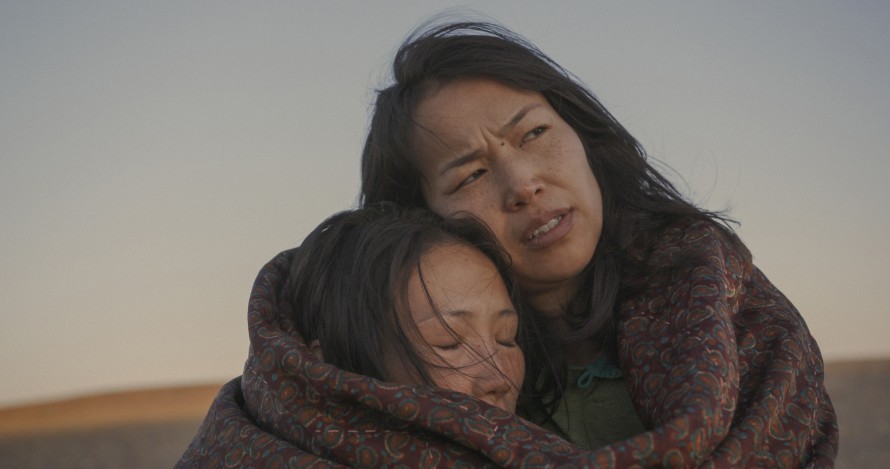
Schwarze Milch by Uisenma Borchu
Post-Immigrant Points of View
Other films also contain such post-immigrant points of view.
Uisenma Borchu, director of Schwarze Milch (Black Milk), goes exactly in the opposite direction. Her heroine returns to her country of origin, Mongolia. Her cultural memory seems to have faded when she arrives and her clothes initially make her look like an alien in the desert. Borchu succeeds in making a radical sensuality in her characters tangible, and that will be challenging for some viewers.
Schwarze Milch also depicts the search for identity which is tackled by many of the films in the programme: people move, people change, and the self is constantly being readjusted. Inner boundaries are a central part of this. As in Futur Drei, the cinematography in Schwarze Milch is very immediate. The images have a high aesthetic value, without indulging in exoticism.
Exil (Exile) by Visa Morina takes a look at the centre of German society. The protagonist, Xhafer, has already lived in Germany for a long time, he is educated, has a good job, a wife and children... Actually, he is the perfect example of successful integration. But Xhafer falls into an identity crisis because he is increasingly ostracised and experiences racism at work due to originally coming from Kosovo. This opens a can of worms because at some point his wife asks him: “Perhaps it’s also down to you?” The borders dissolve. In terms of its form, Exil is very special: many scenes are interiors, creating a claustrophobic atmosphere that reflects Xhafer’s crisis very effectively. Shariat, Borchu and Morina are strong examples of an aspiring and different German cinema.
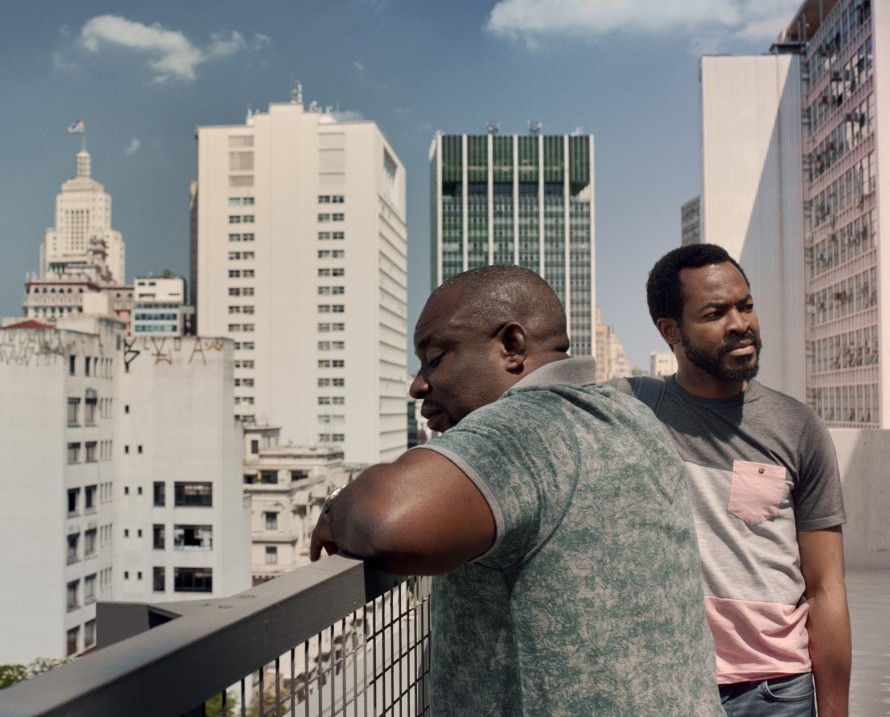
Cidade Pássaro by Matias Mariani
While the aforementioned films are to do with Germany, many other films also contain this post-immigrant viewpoint. In Cidade Pássaro (Shine Your Eyes), Matias Mariani tells the story of a young Nigerian man who is in São Paulo to search for his older brother who has not been in contact with the family for a long time. There, he initially struggles with the language barrier because he doesn’t speak any Portuguese. There are many wonderful, very nicely developed sequences about intercultural, at times also non-verbal, communication. The film looks at the search for identity and questions about one’s own origins. The filmmaker invites the viewer into the lively African diaspora in Brazil. But Mariani doesn’t just portray this diaspora: he is also interested in São Paulo’s architecture and its futuristic, high-rise canyons.
Pari by Siamak Etemadi is also about the search for a missing son.
Exactly. And the film is another urban portrait which is like the negative of Cidade Pássaro: while São Paulo gleams in the daylight, Pari is composed of very gloomy images, with moments of almost complete darkness. Siamak Etemadi follows the story of an Iranian mother who, along with her husband, is looking for their son in Athens. There are strong parallels between the two films. Only the mother speaks English and so she is forced into the role of being the active agent who has to press ahead with the search. Pari depicts a process of self-discovery and the potential of her own identity. The search for her son also, to some extent, frees the mother, just as it often overwhelms her because it means a permanent transgression of boundaries. She is plunged into the darkest corners of the city, meets people she would never normally have anything to do with, and we sense how her old identity is increasingly dissolving. The film finds a perfect language for its story: as it goes on, it abandons the linear narrative and develops the visual equivalent for this dissolution and reinvention of identity. And, last but not least, Pari is an extraordinary portrait of a woman who taps the full potential of rebelling against certain rigid structures imposed by society – whether they be identity, class or social status. Many of the films have this. A lot of the works in the programme contain an equally combative moment. They excel in reflecting the world in which we currently live.
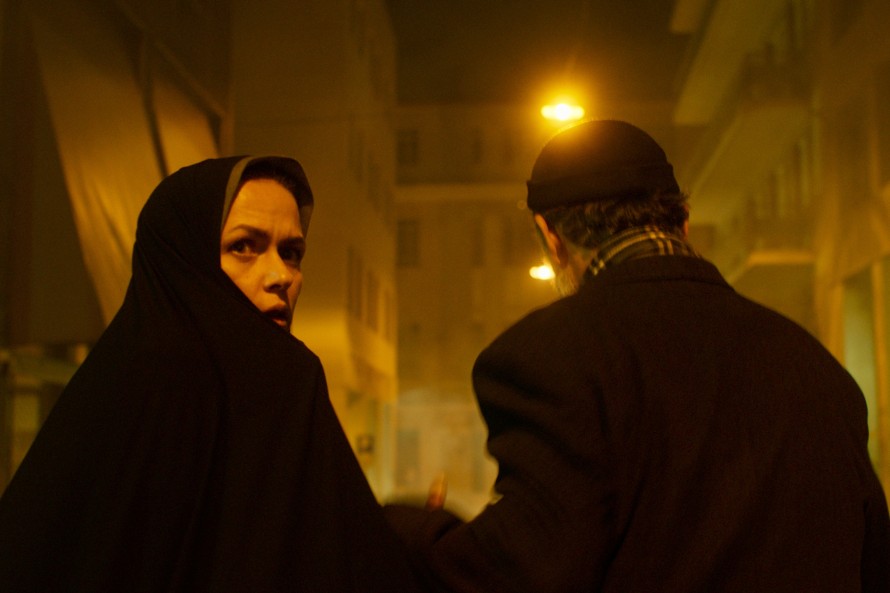
Pari by Siamak Etemadi
Transnational Cinema
Pari is also a very good example of the transnational cinema found in many films today – both on the levels of content and personnel. Siamak Etemadi lives in Greece and has Iranian roots. Another indication of the fact that a narrow understanding of nationality no longer exists are the many international co-productions in the programme. It is no longer possible to read a specific national identity in a film’s country of production. This is a fascinating trend in international cinema.
That brings me back to the aforementioned new generation of filmmakers. In Las Mil y Una (One in a Thousand), for example, Clarisa Navas depicts such a group of young people who represent a new self-confidence.
Las Mil y Una is emblematic of this generation that has a completely new self-image. Clarisa Navas very effectively explores the mania for experimentation in this generation while, at the same time, never losing her grip on reality. She successfully combines this queer, almost utopian vision in a light-footed way with a social realism that does not conceal violence against women, discrimination and Argentina’s broken economy. Two extremes that, at first glance, seem like contradictions but are actually intertwined.
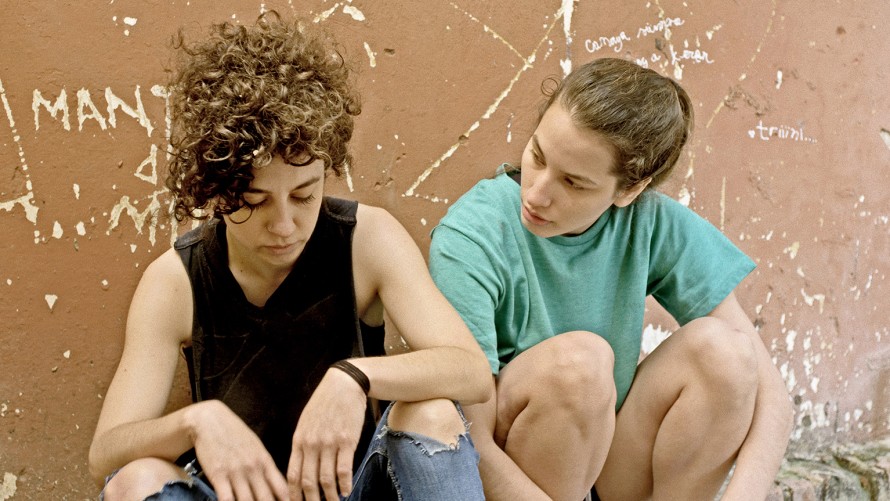
Las Mil y Una by Clarisa Navas
Another topic is the over-exploitation of nature which I find fascinating because, ultimately, it is goes along with a criticism of capitalism as becomes clearly apparent in films like One of These Days by Bastian Günther.
One of These Days contains the most direct criticism of capitalism. It shows a competition in a small town in Texas where the participants stand for days around a pick-up truck that they must touch with one hand. Whoever holds out the longest wins the vehicle. It reminded me of other films made in times of crisis, such as They Shoot Horses, Don’t They? from the 1960s that depicted the dance marathons during the Great Depression in which people danced to the death for a couple of cents. Cyclical re-encounters with certain times become evident. Bastian Günther portrays a small town in Texas as a symbol of people from a generation who feel that they are the losers and the left-behinds because they cannot participate in the luxury that is constantly presented to them on all media channels. One of These Days is an ensemble film and manages to not let its characters turn into caricatures. Their motivations and despair become very tangible. The pick-up truck turns into a sacred cow. That says a lot about neoliberal society.
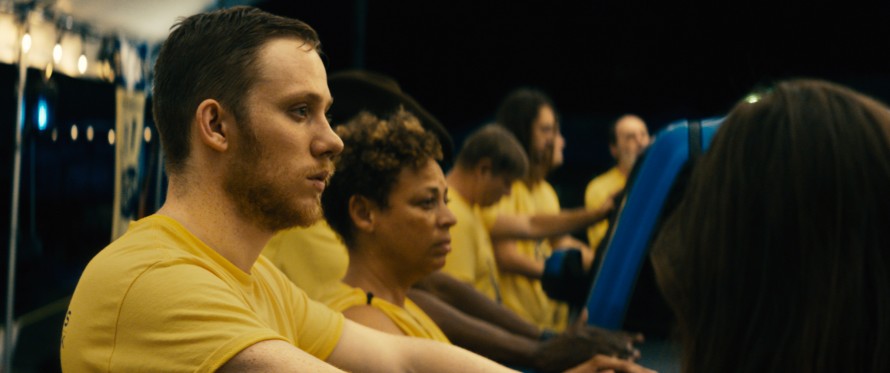
One of These Days by Bastian Günther
Motifs that characterise today’s capitalism can also be found in the documentaries. I Dream of Singapore looks at migration movements from Bangladesh to Singapore, from one of the poorest countries in the region to the richest – to an extremely regulated society which, within its borders, has established a very high social status for its inhabitants, on the backs of migrant workers, of course. The film captures this very openly with impressions of daily work and also everyday life in the city which are contrasted with repeated images of a luxury hotel. The protagonist works on a construction site. After an accident, he receives help from an organisation supporting migrant workers’ rights in Singapore. I Dream of Singapore focuses strongly on the relationship between the worker and the social worker at the organisation. I’m excited to have a film in the programme showing the movement of migrants outside of Europe – as a counterpoint to the depiction of migration as a “European problem”, as some of the political parties in this country like to do. Migration exists everywhere – whether transnational or not – and it has to be dealt with around the world.
That migration also exists inside a country – such as India – is explored in Eeb Allay Ooo! by Prateek Vats. The problems migration brings are here compounded by a very rigid class system that makes people moving from the countryside to the cities suffer even more. They are confronted by a hierarchical attitude and extreme abuses of power. And yet, in spite of its challenging subject matter, Eeb Allay Ooo! is full of humour and is lightly told.
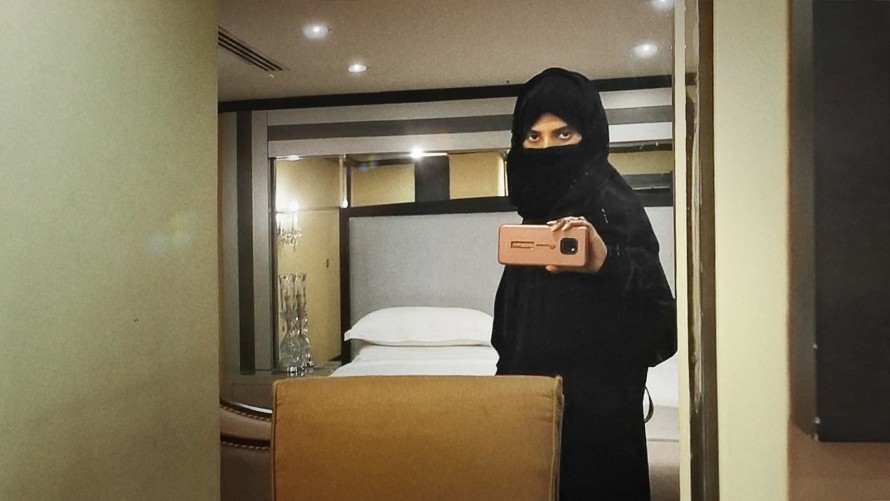
Saudi Runaway by Susanne Regina Meures
Taking Life (and Filmmaking) into Your Own Hands
Mobile phone cameras play an important role in this year’s programme.
You’re right. In the documentary Always Amber by Lia Hietala and Hannah Reinikainen there is, for example, a very strong sense of authorship from the protagonists who both partly film themselves with their phones. I’m also thinking of Nardjes A. by Karim Aïnouz which revolves around the political unrest and protests in Algeria. Aïnouz has Algerian roots and was actually in the country to make a film about his father. Nardjes A. rather came about by accident, filmed during one day and one night when the director met Nardjes Asli through friends and became caught up in the protests. The film is shot on an iPhone which gives the images an incredible sense of immediacy. You can feel the energy of the protests which, although eschewing violence, contain an immense force. Aïnouz’s film prompts an association with Chile, Hong Kong and today’s global culture of protest.
The phone-camera perspective can also be found in Saudi Runaway. It portrays a young woman in Saudi Arabia who, unbeknownst to her family, is filming her daily life with her mobile phone while planning her escape. In her case, the phone camera is a tool of self-empowerment, a means of reflection and also of visualisation. The protagonist creates her own identity via the images. The camera helps her to dare to escape. The film provides unique insights of a high cinematic quality, for example, at the start as the protagonist films from behind her veil which acts as a safe space for her.
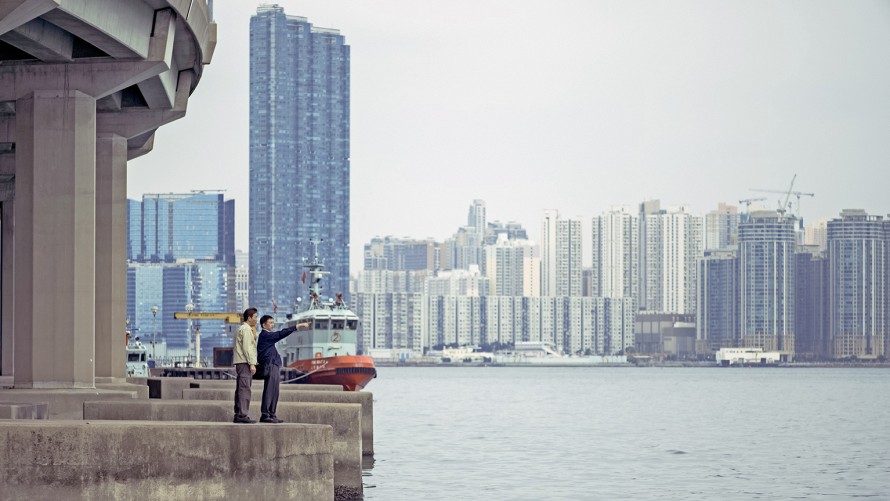
Suk Suk by Ray Yeung
Queer Realms of Possibility
You have already mentioned the special visual language of Faraz Shariat and Uisenma Borchu. Another film that particularly impressed me in this regard is Suk Suk by Ray Yeung.
That was the case for me, too. When I saw the film, I was immediately very taken by it. It tells the story of two men of around 60 who live with their families and have never been able to act out their gayness, or at least, only in certain spaces. The two find each other and grow closer. Ray Yeung captures the ensuing friendship and love in a really wonderful way with very fine details. That people from an older generation fall in love and can negotiate their sexual identity is only rarely shown – not only in queer cinema but also in general. Suk Suk does not exclude the family and thus avoids falling into the typical melodramatic trap to exploit this set-up...
...and play them off against each other.
Exactly. The film shows empathy for all the characters – also for the betrayed wife. An important aspect that made us include the film in the programme is its depiction of the community of older gay people in Hong Kong. How can you define a “community”? How can you help each other? These questions are fundamental and concern us all, regardless of whether or not we are gay.
Returning again to “new” queer cinema...
This clearly includes Futur Drei. Young, queer cinema is characterised by the intersectional approach that a film takes to its different, interrelated topics. In Minyan, Eric Steel shows a young gay man in the Jewish diaspora of Brooklyn in the 1980s. The film beautifully reflects what it means to live in the second generation of this Jewish community, to be gay, and to explore one’s own identity between these conflicting positions. Oral history and an awareness of one’s origins – because the diaspora goes back to the immigration of Russian Jews during the Holocaust – are further important aspects of Steel’s work. These are weighty topics in themselves, but the film brings them together very elegantly.
Vento Seco (Dry Wind) by Daniel Nolasco depicts a hyper-masculine gay desire. The film is set in the agricultural sector in provincial Brazil. The arid land is a symbol of Brazilian society which is drying out and is hostile to people with non-normative desires. The main character is gay, has anonymous sex every now and then, but has not come out. But then there is this one colleague... Vento Seco very tangibly utilises explicit sexuality as a statement and oscillates between a social-realist depiction of a working-class environment and hyper-stylised images of desire. It is a radical, sensual film that we are showing on the big screen in the Zoo Palast. I am very much looking forward to the reactions.